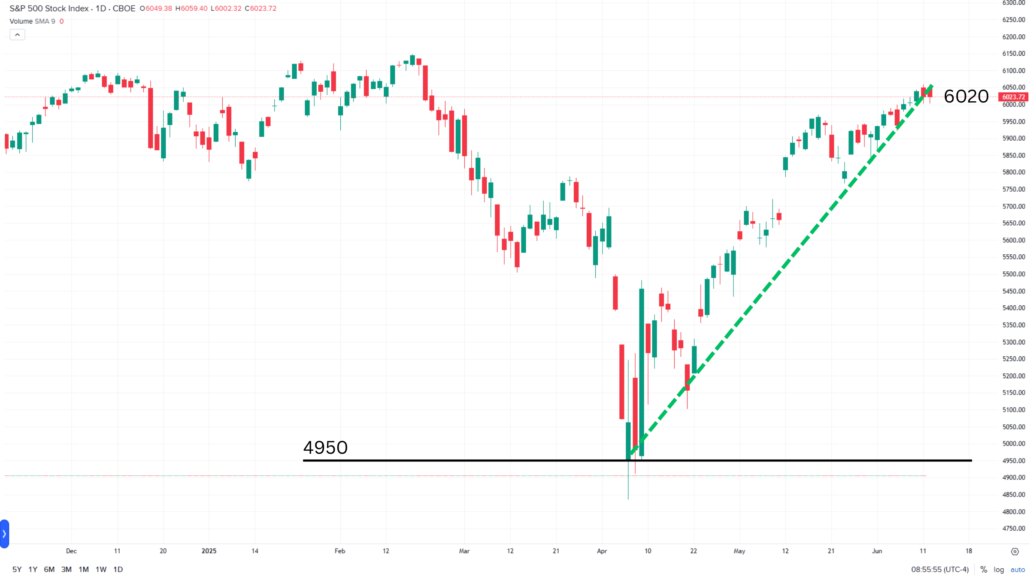
Understanding the 2025 Trade War and Hedging Strategies for Investors
On May 29th, 2025, investors witnessed a sharp rally across European indices and U.S. equity futures. The catalyst? A U.S. court ruling that seemed to invalidate a series of controversial tariffs recently imposed by the Trump administration. However, within just 24 hours, another court overturned the decision, swinging sentiment right back into uncertainty.
This legal back-and-forth offers a live case study in how policy risk and market psychology interact, and why it’s essential for investors to stay informed, agile, and diversified.
Let’s explore the market reactions to Trump’s tariff announcements and strategies in hedging the Trade War 2025 through diversification and defensive stocks.
Legal Uncertainty as a Market Catalyst
The initial ruling questioned the legality of tariffs implemented under a 1970s law that allows the U.S. president to act in a national emergency. Judges argued that long-standing trade deficits don’t qualify as an immediate threat. But the counter ruling asserted that the president has broad discretion, and that courts should not intervene in defining economic emergencies.
This circumstance represents an important lesson for investors, that it is crucial to understand and hedge regulatory and legal risk along with market risk. Legal risks are an often overlooked dimension of global investing.
Market Reactions: Case Study in Volatility
Following the first ruling, technology stocks like Apple and Nvidia surged. The S&P 500 gained over 1.5%. But with the reversal, gains quickly evaporated. The situation demonstrates just how reactive markets can be to legal and political developments.
For learners and active investors alike, this provides a pertinent example of how markets behave during moments of policy ambiguity, and also why emotional discipline is vital in cutting through the noise.
Below is a chart of the S&P 500 index showing the market reactions to U.S. trade policy announcements and the subsequent legal battles.

Source: Interactive Brokers
Why Not All Sectors React the Same
Critical sectors such as semiconductors and components from companies including TSMC, pharmaceuticals, and aerospace, despite being central to global trade, remained largely untouched by the rulings. ASML, for example, rallied alongside tech stocks despite still facing tariff exposure.
This speaks to the differentiated impact of macro events across sectors, and why diversification and risk analysis of stocks is crucial during times of market turbulence.
Hedging the Trade War 2025: Defensive Stocks
Export-heavy industries and firms such as automakers, often bear the brunt of trade disruptions, with German automaker Porsche particularly feeling the pain of this trade war, seeing hefty losses to its valuation in recent months. This is where defensive stocks, those with stable cash flows and low international exposure, become valuable tools in risk management.
In our Academy for Investors Stocks for Beginners and Stocks for the Experienced courses we teach our students how to pick stocks based on their fundamental value, but also their risk characteristics, in constructing a successful portfolio. In terms of Modern Portfolio Theory (MPT), stocks must be considered not in isolation, but also how they correlate to others in one’s portfolio, and how they can be used to buffer volatility.
Take, for example, Greggs (UK) and Red Eléctrica/Redeia (Spain). These companies derive almost all of their cash flows from domestic operations, with Greggs, a British bakery chain and Red Eléctrica, a Spanish electricity transmission infrastructure provider. When global trade shocks hit, their stock prices remain resilient, avoiding the steep drawdowns. Their price may also benefit from global instability as investors shift to a defensive strategy.
It is understanding the correlations and co-movement in stock prices that investors can hedge the trade war 2025.
What Investors Can Do (And Learn)
This episode reinforces the need to:
Monitor policy and legal risk alongside economic data
Diversify across asset classes and regions
Evaluate sector-specific sensitivities
Build a resilient portfolio to hedge instability.
On June 4th, Trump doubled tariffs on imported steel and aluminium from 25% to 50%, escalating the situation. This decision will certainly exacerbate the existing crisis in the steel market and represents a prolonged structural shift with real implications for supply chains and asset prices in the future.
Final Thought: Learn from the Markets
The 2025 market volatility is far from over, but it’s already offering valuable lessons for investors and finance students alike. Practicing portfolio allocation strategies aimed at hedging the Trade War 2025 can help you build resilience and protect long-term returns. This will undoubtedly ingrain the valuable lesson of risk management in investors going forward.
But, in uncertain times like these, certainly the best investment you can make is in your own understanding and education. At the Academy for Investors, we equip you with the tools to navigate market shocks with confidence, from mastering active stock picking and portfolio construction, to interpreting global trade and macroeconomic policy decisions.
Our courses in investing for beginners or the experienced are taught by finance experts with decades of experience are designed to turn uncertainty into opportunity, helping you make smarter, more resilient investment decisions when it matters most.
Knowledge is not just power—it’s protection.
The information in this article should not be interpreted as individual investment advice. Although Hugo Broker Agencia de Valores, S.L. (¨Hugo Investing¨) compiles and maintains these pages from reliable sources, Hugo Investing cannot guarantee that the information is accurate, complete and up-to-date. Any information used from this article without prior verification or advice, is at your own risk. We advise that you only invest in products that fit your knowledge and experience and do not invest in financial instruments where you do not understand the risks.
